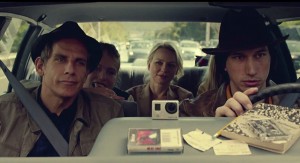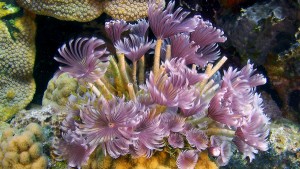AISH and Six13 Uptown Funk Up Passover
Posted on April 3, 2015 at 12:16 pm
AISH made an Uptown Funk parody in honor of Passover:
And so did Six13:
Hag sameach!
Posted on April 3, 2015 at 8:00 am
Costumes, props, and memorabilia from one of the greatest films of all time will be sold at Heritage Auction’s “Gone With the Wind” sale, April 18-19, 2015.
Posted on April 2, 2015 at 5:12 pm
B+| Lowest Recommended Age: | Mature High Schooler |
| MPAA Rating: | Rated R for language |
| Profanity: | Very strong language |
| Alcohol/ Drugs: | Drinking and drug use |
| Violence/ Scariness: | Mild |
| Diversity Issues: | None |
| Date Released to Theaters: | March 27, 2015 |

“While We’re Young” opens with an exchange from Ibsen’s “The Master Builder” about what happens when the young come knocking at the door. But it might just as well begin with the wry Amish aphorism, “We grow too soon old and too late smart.”
Writer/director Noah Baumbach’s work often centers on the perils, agonies, and humiliations, and fears of growing up — including the attempts to avoid it. From the 20-somethings of “Kicking and Screaming” and “Frances Ha” to the immature parents with a teenager struggling through adolescence in his most autobiographical film, “The Squid and the Whale,” he shows us characters who try –unsuccessfully — to hold on to the optimism and narcissism of youth while having access to the powers and privileges of adulthood. Wouldn’t that be nice?
One of the toughest losses of adulthood is the sense of limitless possibilities. That is the moment at which we meet Josh (Ben Stiller) and Cornelia (Naomi Watts). Their friends all have babies. But after miscarriages and failed fertility treatments, they are giving up on having children and trying to convince themselves that they are happy to have nothing to keep them from spontaneous adventures — even if they never take them. Maybe planning a month ahead of time can still be spontaneous, but they don’t do that, either.
Josh is a documentary filmmaker who has been working on the same amorphous film for eight years. The version he is currently editing is so long it seems like it would take eight years to watch it. One problem is that he is not able to explain what it is about. Or, rather, it is about everything, including the very reality of being able to make a movie about whatever it is about. Also about America. So he is pretty much stalled in his personal and professional life.
And then he meets the adorably artisanal newlyweds Jamie (Adam Driver) and Darby (Amanda Seyfried), who have all the dewiness and boundless optimism Josh would love to feel. And, they have something even more important. They are so young that they think he is cool. They attend a class he is teaching and tell him they admire one of his documentary films, which they found on eBay. Josh and Cornelia are enraptured by the younger couple, who remind them of what they once were, while their old friends remind them of what they cannot have. In one sequence, Cornelia disastrously agrees to accompany her closest friend to a music session for infants, then runs out to join Darby at a hip hop dance class. She is hilariously out of place at both, but loves the feeling of being included with the hip hoppers.
Meanwhile, Josh starts wearing a hat just like Jamie’s and riding bicycles with him through the Brooklyn streets. But Josh’s best friend (played by Beastie Boy Adam Horovitz) tells Josh he’s “an old man with a hat” and Josh gets out of breath on the bike. Jamie calls Josh “Joshie,” affectionate but also infantilizing.
Both young and old will find a lot to laugh at in this film, which has Baumbach’s frothiest dialog and shrewdest characterizations. “Arthritis arthritis?” Josh asks his doctor in dismay when he gets a diagnosis, hoping that perhaps he has some sort of specialized temporary form of arthritis that young people get. “I usually just say ‘arthritis,'” his doctor dryly replies. Josh and Cornelia are mesmerized by the preciously retro decor of Jamie’s and Darby’s apartment, with rows of LPs. “It’s like they have everything we threw out but with them it looks good,” says Cornelia.
Then Jamie’s own documentary starts coming together, and Josh turns from mentor to stepping stone. The documentarian’s obsession with truth-telling takes a twist. And the issue of fathers and sons takes another, as we learn that Cornelia’s father was a one-time mentor of Josh’s and is a possible mentor for Jamie.
The final scene brings us full circle. Baumbach’s past films have been perceptive and wryly funny, sometimes sympathetic, but here we get to see some tenderness for his characters. As former poet laureate Billy Collins says when people use the word some critics are using about this film: “accessible,” this is not “accessible.” It is welcoming.
Parents should know that this movie has very strong language and some drinking and drug use.
Family discussion: Who was right about Jamie’s movie? Ask the older people in your family what they like best about not being young anymore.
If you like this, try: “Metropolitan” and “Kicking and Screaming”
Posted on April 2, 2015 at 3:51 pm

Jean-Michel Cousteau has carried on the legacy of his famous father, Jacques Cousteau, who first allowed the world to see the creatures that live in the water, through deep-sea diving and his pioneering underwater photography. Now his son has used the latest technology to show us another world previously unseen, with tiny animals and colors as bright as any garden in full flower.
I spoke to Cousteau about his latest film, Secret Ocean 3D.
He wanted to work with IMAX 3D, in order “see the behavior of things that I’m flying or swimming over all the time since I started diving when I was seven years old, fifty nine years ago. And I would be very frustrated not to be able to see the behavior of tiny little things. So they put together the prototype cameras which are allowing us now to focus in slow motion on the behavior of small creatures and see what they are doing to feed themselves, protect themselves and be of course in relationship with other creatures. So for me I am now for the first time in my life able to see things on the big screen which I cannot see when I’m under water.”
I was especially fascinated with the tiny animals who look like flowers and the squid who could instantly change color to match the environment. “The flower-like creatures are found mostly in the tropical environment. The beautiful one that you see in the show are in the tropics in the Caribbean and in Fiji. Then there were these beautiful worms which are called Christmas tree worms. The squids were in Southern California. Squids and octopus can change their color, their texture. They have no bones so they are very bendable. They can hide. They are really amazing creatures. The bad news as you probably have heard on the show is that they die every year. After they reproduce they are gone. I am totally convinced that if they didn’t die they probably would run the planet today because they have real brains and are very clever creatures.”
There is a creature that looks like a pile of sticks. In the film, we learn that it has no head or brain but can regenerate its limbs. “We have seen those creatures but usually we don’t see the same one during the day and then come back and see the same one at night. Thanks to science and scientists we are able to learn about these creatures because they capture them and they analyze them. So the instinct that they have to capture food and bring into their mouth when you realize they have no brain is just for me it’s fascinating. I’m just like a kid every time I see them. So we were very patient, we saw it. As a matter of fact we saw two of them during the daytime and we decided, okay we have to wait and come back at night and we did and they were still there. And we were able to film them.”
What surprised me most in the film was the information about the tiniest creatures, plankton, and the part they play in keeping the rest of the world breathing. “Plankton are really the foundation of life in the ocean. And you have two kinds of planktons, the big which you see which are very spectacular, many different types of species and then the tiny little ones which drift. And the big ones are animals. They are called zooplankton. And then the tiny little ones which are plants, they are phytoplankton. Now the zooplankton is feeding on the phytoplankton. They need that to feed themselves and to grow and they are what you call the foundation of all life in the ocean. Without them there would be no life. So being absorbed within the food chain, they migrate towards the surface every day. And they are very very active at night and of course there are a lot of creatures that are coming by and feeding on them, both the plants and animals. And it goes all the way up the food chain all the way to the big creatures whether they are fish or mammals, whales or sea lions or tuna. Totally every creature is dependent on these unbelievable plants and animals which are the foundation of all life in the ocean. As a result of all that about half of the oxygen that is being produced comes from the ocean. And every other breath of air that you take you are getting it thanks to the ocean. So we are totally connected and dependent on the quality of life in the ocean. Unfortunately we didn’t know that before. Now we are learning and we are learning very fast thanks to what I call communication evolution. There are people all over the planet now who are asking questions now about these creatures. We need to learn very quickly and pass on the information to the decision-makers and the future decisions makers which are the children, the young people. They need to understand that we need to stop using the ocean as a garbage can. Because all of that decomposes and it affects the food chain, it affects the plankton, it affects the creatures which are concentrating those chemicals in their system and accumulates them, and concentrates as the creatures are getting bigger and bigger up the food chain. So we are hurting that environment which means we are hurting ourselves. At the end of the day it is not just the fact that we fishing or we catching more than nature can produce. We have learned that a long time ago, we are not hunters and gatherers we are farmers. So we need to do something with the ocean but we cannot farm creatures that are disappearing and you cannot farm in the ocean where you have the storms, hurricanes and so on.”
Jean-Michel told me that his father pushed him into the water with a tank on his back when he was seven and the water is home to him. “He kept telling me, ‘People protect what they love,’ and I kept telling him, ‘How can you protect what you don’t understand?’ So thanks to my dad I have this thirst for discoveries and wanting to protect what we don’t understand.”